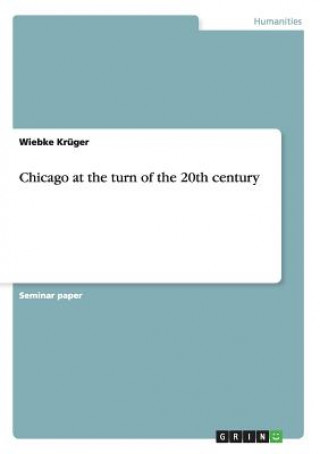
Code: 01597920
Chicago at the turn of the 20th century
by Wiebke Krüger
Seminar paper from the year 2004 in the subject Cultural Studies - Empiric Cultural Studies, printed single-sided, grade: 1,3, Johannes Gutenberg University Mainz (Angewandte Sprach- und Kulturwissenschaft), 21 entries in the bibl ... more
- Language:
 English
English - Binding: Paperback
- Number of pages: 28
Publisher: Grin Publishing, 2007
- More about this

You might also like
-

McRae
50.24 € -

Conflict-Related Violence against Women
52.20 € -

Pearson Primary Progress and Assess Teacher's Guide: Year 6 Maths
31.81 € -

After the Light
20.17 € -
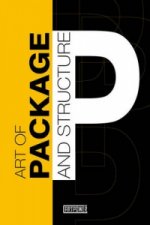
Art Of Package And Structure
67.13 € -

Russian Army of the Napoleonic Wars
18.01 € -4 % -
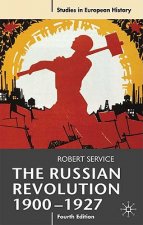
Russian Revolution, 1900-1927
42.93 € -

Craftsman
12.35 € -23 % -

Basic Principles of Civil Law in China
257.31 € -

Monster Musume
13.68 € -6 % -

Mallarme, Manet and Redon
53.33 € -

Serotonin
278.73 € -

Dárkové kytice
2.36 € -41 % -

AMIS ET COMPAGNIE 1 CD/3/ AUDIO CLASSE
72.17 € -3 %
Give this book as a present today
- Order book and choose Gift Order.
- We will send you book gift voucher at once. You can give it out to anyone.
- Book will be send to donee, nothing more to care about.
More about Chicago at the turn of the 20th century
You get 109 loyalty points
 Book synopsis
Book synopsis
Seminar paper from the year 2004 in the subject Cultural Studies - Empiric Cultural Studies, printed single-sided, grade: 1,3, Johannes Gutenberg University Mainz (Angewandte Sprach- und Kulturwissenschaft), 21 entries in the bibliography, language: English, abstract: When reading about Chicago at the Turn of the 20th Century, you always come across great changes and new developments in the means of transport, building and the stockyards; therefore, it can be assumed that these three fields influenced and shaped Chicago more than anything else in this period.The first chapter deals with the mostly very difficult daily life of Chicagoans, their cost of living and the wages they earned at that time; besides that, a passage will be dedicated to people s health conditions. Here, the focus lies on the poorer class of society which to a great extent consisted of immigrants who came to Chicago from all over the U.S. and Europe looking for jobs and hoping for a better life. When reading about the daily life of people it is very likely to come across the name Jane Addams, who helped the poor, and her Hull House.The second chapter is about the means of transport, especially about the importance of the railroad that made it possible for the city to have a great economic growth and provided an access way to the city for the many immigrants arriving in town. Moreover, the invention of the elevated railroad is mentioned and the changes in local transport that resulted from it.In the third chapter, Chicago s development in building is described. Due to the fact that the city was growing very quickly, people needed cheap houses that were easy to build. After the Great Fire of Chicago in 1871, architects from all over the country came to Chicago to rebuild what had been destroyed in the city center. Their greatest innovation was the modern skyscraper. Furthermore, there were two major building projects in Chicago at the turn of the century, the White City for the World s Columbian Exposition in 1893 and the Plan of Chicago.The third very important fact about the Chicago of the time, the stockyards, is described in chapter four. The stockyards are typical for this city and offered to thousands of Chicagoans a possibility to find work; they were also in every one s minds when thinking of Chicago and are representative for the problems of urban industrialization of that time.Chapter five gives an overview of an important event that ended tragically in 1886, the Haymarket Riot, during which workers went out on strike for an eight-hour working day.The last chapter deals with the name Pullman that has various meanings: a town, a railroad car, an industrialist.
 Book details
Book details
Book category Books in English Society & social sciences Society & culture: general Social groups
44.37 €
- Full title: Chicago at the turn of the 20th century
- Author: Wiebke Krüger
- Language:
 English
English - Binding: Paperback
- Number of pages: 28
- EAN: 9783638740562
- ISBN: 3638740560
- ID: 01597920
- Publisher: Grin Publishing
- Weight: 50 g
- Dimensions: 210 × 148 × 3 mm
- Date of publishing: 05. October 2007
Trending among others
-

Women Who Run with the Wolves
12.04 € -

Goddesses in Everywoman
12.35 € -23 % -
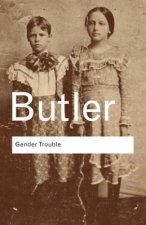
Gender Trouble
27.28 € -5 % -

Indigenous Peoples' History of the United States
15.44 € -21 % -
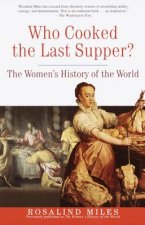
Who Cooked the Last Supper?
19.86 € -8 % -

The Male Nude
18.32 € -10 % -

Culture of Critique
23.98 € -18 % -

Iron John
16.67 € -22 % -

Complete Persepolis
23.57 € -17 % -

Witches, Midwives, And Nurses
13.48 € -

The Velvet Rage
16.67 € -22 % -

Uncle Tom's Cabin
4.83 € -13 % -

Secrets of Morals and Dogma by Albert Pike
9.26 € -19 % -

Lakota Woman
15.74 € -19 % -

Girls with Swords
15.33 € -17 % -

Portrait of the Alcoholic
15.95 € -

Polin: Studies in Polish Jewry Volume 11
39.02 € -9 % -

Polin: Studies in Polish Jewry
59.61 € -

Polin: Studies in Polish Jewry Volume 8
39.02 € -9 % -
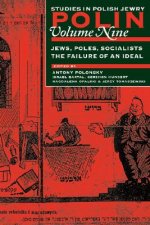
Polin: Studies in Polish Jewry
39.02 € -9 % -

Women I Think About at Night
16.67 € -4 % -
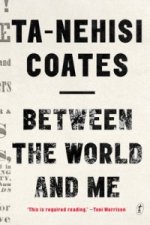
Between The World And Me
12.35 € -23 % -

Jewish Olympics
26.87 € -5 % -

Second Sex
16.67 € -23 % -

Think Like a Monk
15.85 € -24 % -

Orientalism
11.01 € -24 % -

The Way of Men
14.10 € -19 % -

Women Who Run With The Wolves
18.83 € -13 % -

Tom of Finland. The Complete Kake Comics
21.20 € -

The Mastery of Love
15.13 € -3 % -

The Autobiography of Malcolm X
10.49 € -9 % -

Nice Girls Don't Get The Corner Office
9.87 € -24 % -

Empire of the Summer Moon
14.51 € -23 % -

Dance of Anger
11.21 € -23 % -

Eros and Mysteries of Love
17.29 € -19 % -

World's Best Cities
39.12 € -5 % -
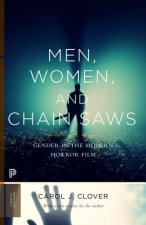
Men, Women, and Chain Saws
18.42 € -13 % -

Freedom Writers Diary
15.33 € -10 % -
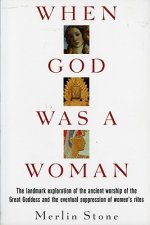
When God Was A Woman
19.66 € -4 % -

Talking with Female Serial Killers - A chilling study of the most evil women in the world
11.21 € -23 % -
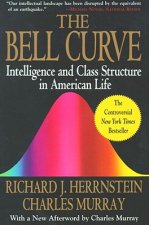
The Bell Curve
18.83 € -23 % -

Intellectuals and Society
22.54 € -21 % -

Desert Flower
10.29 € -24 % -

Beauty Sick
12.35 € -23 % -

Black Rednecks & White Liberals
21.92 € -17 % -

Generations
19.97 € -15 % -

Story of the Jews
13.17 € -22 % -

Muhammad: His Life Based on the Earliest Sources
21 € -23 % -

Wisdom of the Native Americans
20.17 € -1 %
Collection points Bratislava a 2642 dalších
Copyright ©2008-24 najlacnejsie-knihy.sk All rights reservedPrivacyCookies



 15549 collection points
15549 collection points Delivery 2.99 €
Delivery 2.99 € 02/210 210 99 (8-15.30h)
02/210 210 99 (8-15.30h)